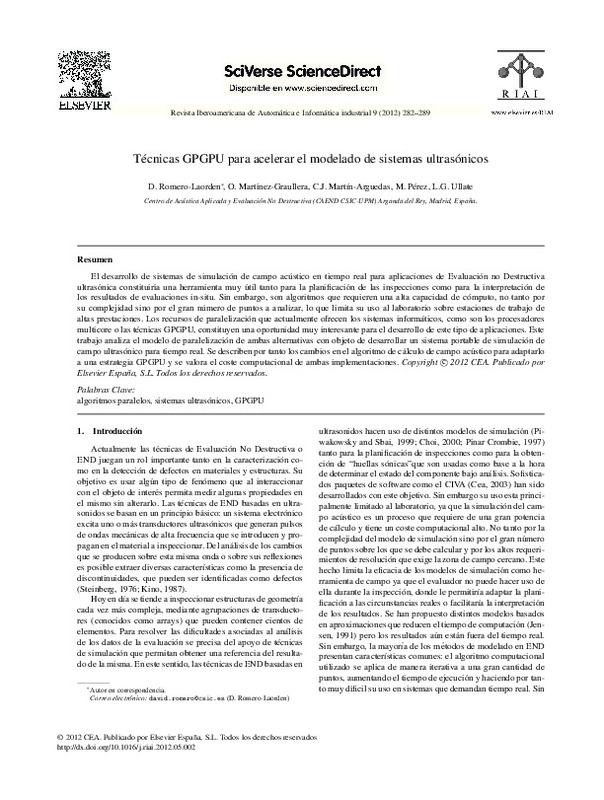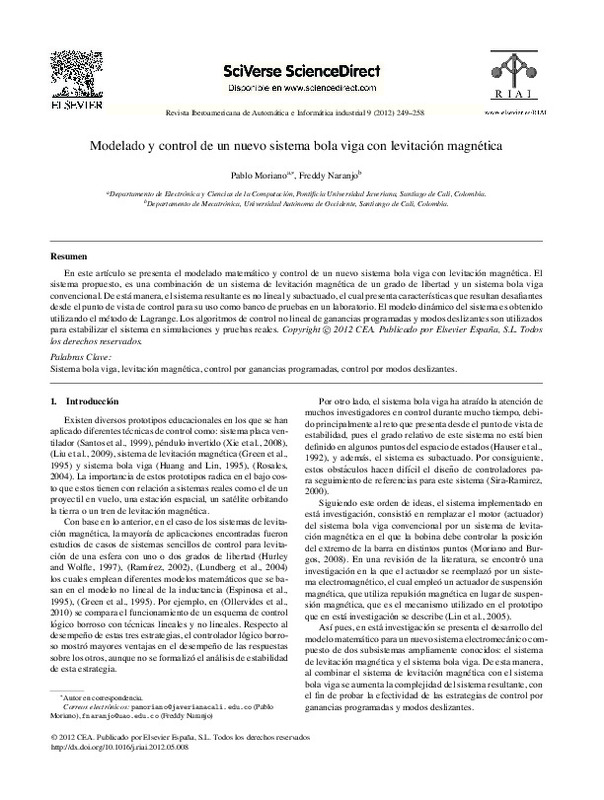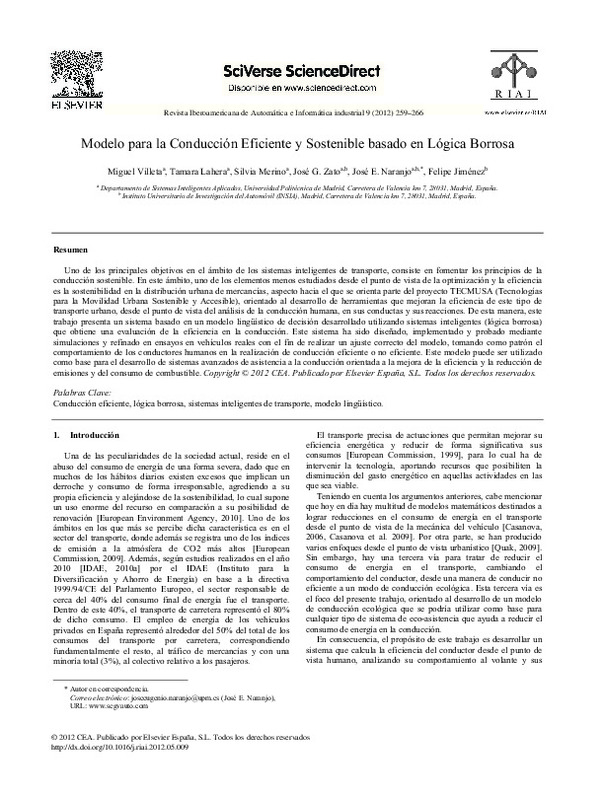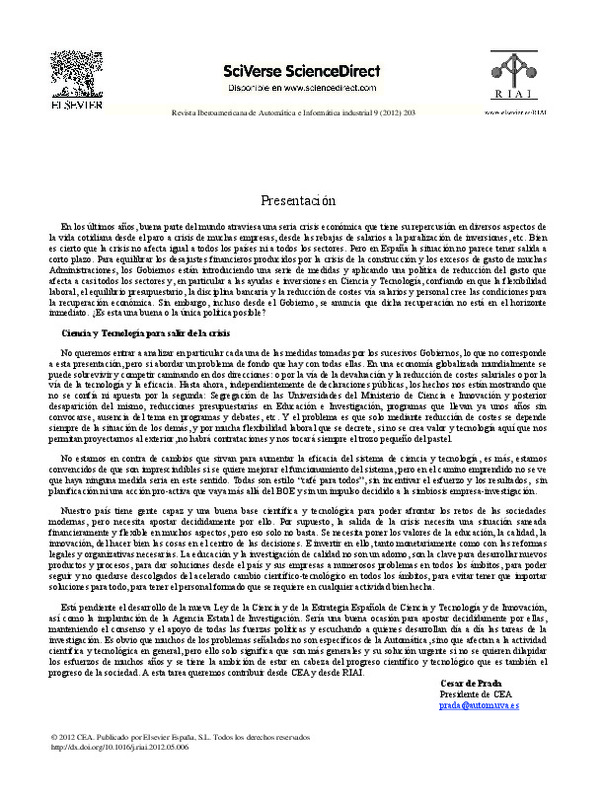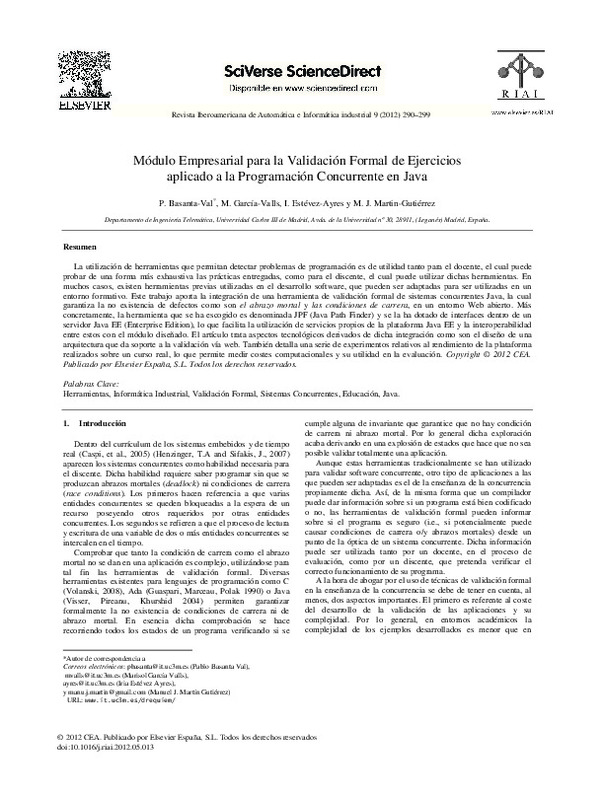- RiuNet repositorio UPV
- :
- Investigación
- :
- Material investigación. Editorial UPV
- :
- Revistas UPV. Editorial UPV
- :
- RIAI - Revista Iberoamericana de Automática e Informática industrial
- :
- Revista Iberoamericana de Automática e Informática - Vol 09, No 3 (2012)
JavaScript is disabled for your browser. Some features of this site may not work without it.
Refinar
Revista Iberoamericana de Automática e Informática - Vol 09, No 3 (2012)
Tabla de contenidos
Presentación
Nota de Redacción
Tutoriales
- Automática marina: una revisión desde el punto de vista del control
- Control repetitivo digital de sistemas con frecuencia incierta o variante en el tiempo
Artículos
- Aplicación de técnicas de control robusto QFT a sistemas navales
- Aplicación para el estudio de implantación de un sistema no satelitario de identificación de buques
- Modelado y control de un nuevo sistema bola viga con levitación magnética
- Modelo para la Conducción Eficiente y Sostenible basado en Lógica Borrosa
- Modelado y Simulación de un Sistema Conjunto de Energía Solar y Eólica para Analizar su Dependencia de la Red Eléctrica
- Técnicas GPGPU para acelerar el modelado de sistemas ultrasónicos
- Módulo Empresarial para la Validación Formal de Ejercicios aplicado a la Programación Concurrente en Java
- Reconfiguración Dinámica de Sistemas Distribuidos en Tiempo-Real Basada en Agentes
- Cámara Virtual de Referencia: Una Aproximación para el Guiado Combinado de Robots Manipuladores mediante una Única Cámara
Tutoriales
- Memorias de la Automática



